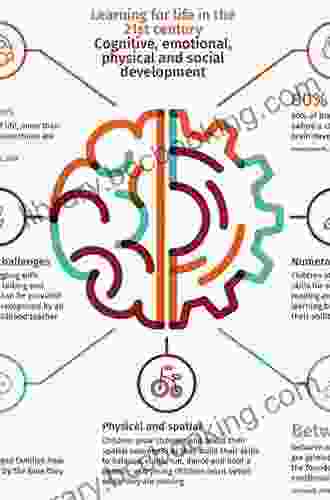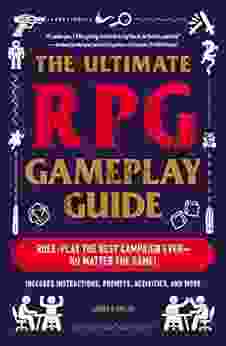Unlocking the Power of Neuroscience and Psychology for Enhanced Learning and Training

In the fast-paced, ever-evolving world we live in, the need for effective learning and training is paramount. Organizations and individuals alike are constantly seeking ways to optimize their learning experiences to maximize knowledge acquisition and skill development. This is where neuroscience and psychology come into play, offering invaluable insights into the workings of the human brain and mind, and providing practical strategies to enhance learning and training outcomes.
4.8 out of 5
| Language | : | English |
| File size | : | 4054 KB |
| Text-to-Speech | : | Enabled |
| Enhanced typesetting | : | Enabled |
| Word Wise | : | Enabled |
| Print length | : | 294 pages |
| Screen Reader | : | Supported |
The Role of Neuroscience in Learning and Training
Neuroscience, the study of the nervous system and brain, provides a wealth of knowledge about how the brain processes and stores information. By understanding the brain's structure and function, we can tailor our learning and training approaches to align with the brain's natural learning mechanisms.
Key findings from neuroscience research have shown that:
- The brain is wired for learning: The brain is constantly adapting and changing, forming new neural connections and pathways as we learn. This neuroplasticity makes learning a lifelong process.
- Emotion plays a vital role in learning: When we experience positive emotions, such as interest and curiosity, the brain releases neurotransmitters like dopamine that enhance learning and memory. Negative emotions, on the other hand, can impede learning.
- Attention is essential for learning: The brain can only process a limited amount of information at any given time. Therefore, it is crucial to sustain attention and focus during learning and training.
- Memory is not a static process: Memories are not like snapshots stored in the brain; instead, they are actively reconstructed each time they are recalled. This reconstruction process is influenced by new information, experiences, and emotions.
The Role of Psychology in Learning and Training
Psychology, the study of human behavior and mental processes, provides insights into how people learn, think, and interact. By understanding the psychological principles of learning, we can design learning and training programs that effectively engage learners and promote meaningful learning.
Key findings from psychological research have highlighted the importance of:
- Motivation: Intrinsic motivation, driven by internal factors such as curiosity and interest, is a powerful force in learning. Extrinsic motivation, driven by external factors such as rewards or punishments, can also be effective but may lead to surface-level learning.
- Prior knowledge: Existing knowledge and experiences influence how new information is processed and understood. Learning is most effective when it builds upon existing knowledge and connects new information to what the learner already knows.
- Active learning: Learners retain more information and develop deeper understanding when they actively engage with the material through activities such as discussions, simulations, or hands-on experiences.
- Feedback: Regular and timely feedback is essential for learning. It provides learners with information about their progress and areas for improvement, allowing them to adjust their learning strategies accordingly.
Practical Applications for Enhancing Learning and Training
By integrating the insights from neuroscience and psychology, we can develop and implement practical strategies to enhance learning and training experiences. Here are some key considerations:
Design for Attention and Engagement
- Break down complex topics into smaller, manageable chunks.
- Use visual aids, such as graphs, charts, and videos, to make information more engaging and memorable.
- Incorporate interactive elements, such as quizzes and simulations, to keep learners actively involved.
Promote Emotion and Motivation
- Create a positive and supportive learning environment that encourages curiosity and exploration.
- Connect the learning material to real-world examples and scenarios to make it relevant and meaningful.
- Set clear goals and provide regular feedback to keep learners motivated and engaged.
Facilitate Active Learning and Memory Consolidation
- Provide opportunities for learners to actively participate in discussions, problem-solving exercises, and hands-on experiences.
- Encourage learners to reflect on what they have learned and connect it to their prior knowledge.
- Use spaced repetition and retrieval practice to enhance memory retention.
Foster a Collaborative Learning Environment
- Encourage peer-to-peer learning and collaboration through online forums, group projects, and study groups.
- Provide opportunities for learners to share their knowledge and experiences with others.
- Create a sense of community and belonging to promote motivation and engagement.
By harnessing the power of neuroscience and psychology, we can revolutionize learning and training, creating experiences that are effective, engaging, and transformative. By understanding how the brain and mind work, we can design learning environments that optimize attention, motivation, and memory. By integrating practical strategies that promote active learning, emotional engagement, and a collaborative spirit, we can empower learners to achieve their full potential and contribute to organizational success.
If you are looking for a comprehensive guide to applying neuroscience and psychology for improved learning and training, I highly recommend the book How To Apply Neuroscience And Psychology For Improved Learning And Training. This book provides a thorough exploration of the scientific principles behind effective learning and offers practical strategies and techniques that you can implement immediately to enhance your learning and training programs.
With the insights and strategies outlined in this book, you can transform your learning and training initiatives into powerful experiences that drive knowledge acquisition, skill development, and lasting change.
4.8 out of 5
| Language | : | English |
| File size | : | 4054 KB |
| Text-to-Speech | : | Enabled |
| Enhanced typesetting | : | Enabled |
| Word Wise | : | Enabled |
| Print length | : | 294 pages |
| Screen Reader | : | Supported |
Do you want to contribute by writing guest posts on this blog?
Please contact us and send us a resume of previous articles that you have written.
 Book
Book Novel
Novel Page
Page Chapter
Chapter Text
Text Story
Story Genre
Genre Reader
Reader Library
Library Paperback
Paperback E-book
E-book Magazine
Magazine Newspaper
Newspaper Paragraph
Paragraph Sentence
Sentence Bookmark
Bookmark Shelf
Shelf Glossary
Glossary Bibliography
Bibliography Foreword
Foreword Preface
Preface Synopsis
Synopsis Annotation
Annotation Footnote
Footnote Manuscript
Manuscript Scroll
Scroll Codex
Codex Tome
Tome Bestseller
Bestseller Classics
Classics Library card
Library card Narrative
Narrative Biography
Biography Autobiography
Autobiography Memoir
Memoir Reference
Reference Encyclopedia
Encyclopedia Rachel Howzell Hall
Rachel Howzell Hall Uta Frith
Uta Frith Rick Noren
Rick Noren Oh Great
Oh Great M L Rose
M L Rose Peter Liljedahl
Peter Liljedahl Maurice Broaddus
Maurice Broaddus Mo Rocca
Mo Rocca Mr Luna
Mr Luna Robert L Dilenschneider
Robert L Dilenschneider Sonia Pressman Fuentes
Sonia Pressman Fuentes Piri Halasz
Piri Halasz Sandy Mitchell
Sandy Mitchell Thomas Ramge
Thomas Ramge Sanja Kulenovic
Sanja Kulenovic Kupe Kupersmith
Kupe Kupersmith Vishnubhat Godse Varsaikar
Vishnubhat Godse Varsaikar Russell Bryant
Russell Bryant Philippe Karl
Philippe Karl Todd Hasak Lowy
Todd Hasak Lowy
Light bulbAdvertise smarter! Our strategic ad space ensures maximum exposure. Reserve your spot today!

 Roberto BolañoUnlock the Power of Lean for Small and Medium-Sized Manufacturing Enterprises
Roberto BolañoUnlock the Power of Lean for Small and Medium-Sized Manufacturing Enterprises Oscar BellFollow ·7k
Oscar BellFollow ·7k Forrest BlairFollow ·13.6k
Forrest BlairFollow ·13.6k Anthony BurgessFollow ·7.7k
Anthony BurgessFollow ·7.7k Asher BellFollow ·18.1k
Asher BellFollow ·18.1k Manuel ButlerFollow ·18.8k
Manuel ButlerFollow ·18.8k Vincent MitchellFollow ·9.8k
Vincent MitchellFollow ·9.8k Bob CooperFollow ·17.1k
Bob CooperFollow ·17.1k Lord ByronFollow ·9.1k
Lord ByronFollow ·9.1k

 Brian Bell
Brian BellExploring The Natural World Through Mindful Expressive...
Unleash the...

 David Baldacci
David BaldacciJourney into the Enigmatic World of "Grass" by Sheri S....
Prepare to be captivated by "Grass," a...

 Dashawn Hayes
Dashawn HayesBusting Myths About Human Nature: Unraveling the Complex...
Challenging the...

 Ernest Hemingway
Ernest HemingwayNotes on Suicide: A Profound Exploration of the...
Suicide, a taboo subject shrouded in...
4.8 out of 5
| Language | : | English |
| File size | : | 4054 KB |
| Text-to-Speech | : | Enabled |
| Enhanced typesetting | : | Enabled |
| Word Wise | : | Enabled |
| Print length | : | 294 pages |
| Screen Reader | : | Supported |














